A 6 kg shell is fired with a 30° angle,v= 40 m/s. At the highest point it devides into 2 parts,one 2 kg and the other 4 that move in the horizontal line and 2 kg hits the ground at the start point.where the 4 kg piece hits the ground?
2 Answers
Explanation:
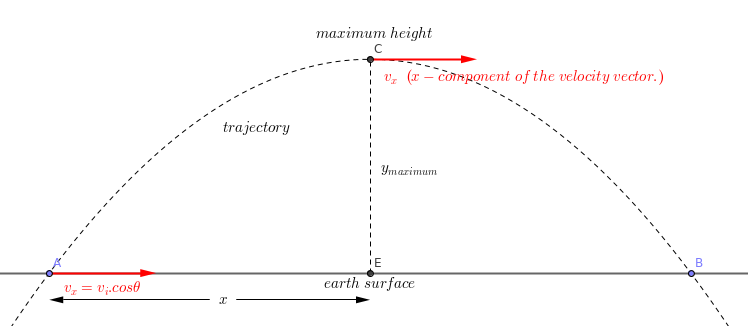
- We will use the principle of momentum conservation to solve the problem.
- In the solution of the problem, we must assume that the conditions are ideal and that there is no energy loss.
- Suppose that C is the maximum height. At this point, the object instantaneously has only a horizontal velocity component.
-
When the object is at point C, it only has instant horizontal momentum.
-
momentum vector and direction are seen below.
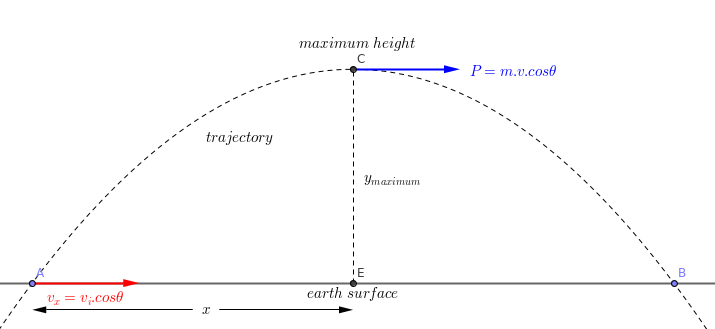
- we have to rethink the momentum of each piece when the bullet is divided into two.
- the vectorial sum of the vertical momentum of the parts is zero.Because the bullet only had horizontal momentum.
- Both parts of the bullet must have horizontal momentum.
- The momentum vectors for the part are given below.
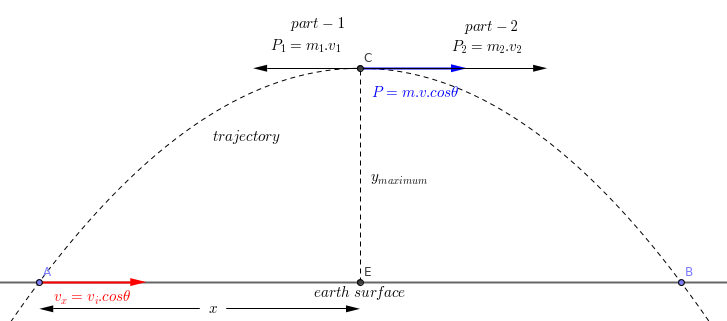
- We can write the principle of conservation of Momentum in the following way.
- Because the first part is returned to its original position, the velocity of this part is equal to and opposite to the horizontal velocity component.
- We can find the momentum of the second part.
- Now we can find the velocity of the second part.
- Objects thrown horizontally from the same height reach equally long.
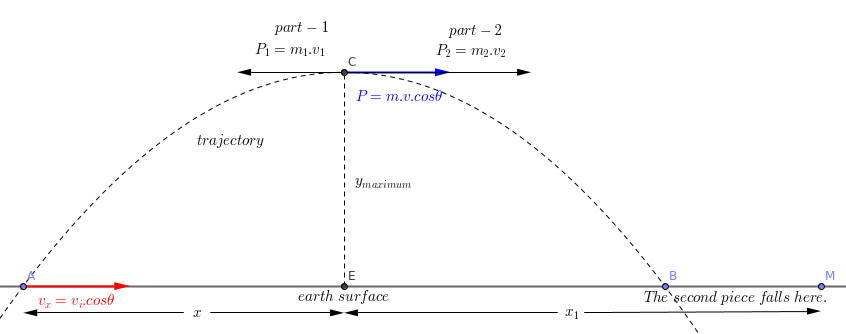
-
falls 218 meters from the point where it is thrown.
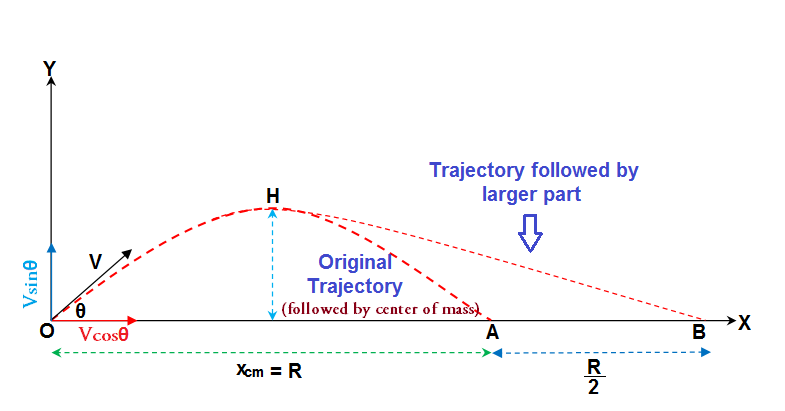
- Mass of the shell
#m=6kg# - Velocity of projection
#V=40m"/"s# - Angle of projection
#theta=30^@# - Mass of smaller part after the division of the shell
#m_1=2kg# - Mass of larger part after the division of theshell
#m_2=4kg# -
The horizontal component of velocity of projection
#Vcostheta# -
The vertical component of velocity of projection
#Vsintheta#
If time of flight be T then
The range
Hence
1st method of calculation
This is based on the fact that the center of mass of the projectile follows the same trajectory even if it is divided in to two or more parts due to explosion at any point during its time of flight and so suffers same horizontal displacement after completion of time of flight (T)
So if
By the condition of the problem
So
2nd method of calculation
This method is based on the principle of conservation of momentum. The explosion occurs at the highest position (H) of the projectile and the smaller part of the projectile of mass
At the highest point just before the moment of explosion the projectile has got only horizontal component of its velocity
After division into two parts at highest point
So Total horizontal displacement of the larger part
= displacement before explosion during 1st half of time of flight + displacement of larger part after explosion during 2nd half of time of flight


